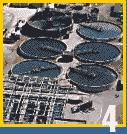 |  
| Europa Statistics |
|---|
| Discovered by | Simon Marius & Galileo Galilei |
|---|
| Date of discovery | 1610 |
|---|
| Mass (kg) | 4.8e+22 |
|---|
| Mass (Earth = 1) | 8.0321e-03 |
|---|
| Equatorial radius (km) | 1,569 |
|---|
| Equatorial radius (Earth = 1) | 2.4600e-01 |
|---|
| Mean density (gm/cm^3) | 3.01 |
|---|
| Mean distance from Jupiter (km) | 670,900 |
|---|
| Rotational period (days) | 3.551181 |
|---|
| Orbital period (days) | 3.551181 |
|---|
| Mean orbital velocity (km/sec) | 13.74 |
|---|
| Orbital eccentricity | 0.009 |
|---|
| Orbital inclination (degrees) | 0.470 |
|---|
| Escape velocity (km/sec) | 2.02 |
|---|
| Visual geometric albedo | 0.64 |
|---|
| Magnitude (Vo) | 5.29 |
|---|
It's time to take my drunk ass home...
http://www.youtube.com/watch?v=fT78hveC_Ow
A foot in stirups flower thirst, rackety eee oorhhh mule lenguas, a thread on a cowboy hat, a lace garter on beds grinning female leg, a desert newspaper??? Bring me the liquer bottle boy, um o get me some drunk...
Water Supply & Distribution History I - Clean Water Challenge
|



 | 
Indoor plumbing was rare, especially in the countryside, and in cities it was inadequate at best. Tenements housing as many as 2,000 people typically had not one bathtub. Raw sewage was often dumped directly into streets and open gutters; untreated industrial waste went straight into rivers and lakes, many of which were sources of drinking water; attempts to purify water consistently fell short, and very few municipalities treated wastewater at all.
As a result, waterborne diseases were rampant. Each year typhoid fever alone killed 25 of every 100,000 people (Wilbur Wright among them in 1912). Dysentery and diarrhea, the most common of the waterborne diseases, were the nation's third leading cause of death. Cholera outbreaks were a constant threat. These challenges of both quantity and quality—to make sure there was enough water conveniently supplied wherever it was wanted and to make sure that it was safe both before and after use—fell to the nation's civil engineers. The results of their efforts speak for themselves: a deadly handful of waterborne diseases virtually eliminated not only in the United States but throughout the developed world; water distribution systems pumping a clean supply into homes, apartments, businesses, and factories and meeting the needs of tens of millions of people in burgeoning new cities and communities; and the rich potential of western lands realized in acre upon acre of irrigated crops. All told, what 20th-century engineers did to improve the water supply wrought a host of stunning transformations—in public health, in living standards, and in both urban and agricultural development.
As the century began, the most pressing task was to find better ways to make water clean. The impetus came from the discovery only a few years before the turn of the century that diseases such as typhoid and cholera were actually traced to microorganisms living in contaminated water. Treatment systems in place before then had focused on removing particulate matter suspended in water, typically by using various techniques that caused smaller particles to coagulate into heavier clumps that would settle out and by filtering the water through sand and other fine materials. Some harmful microorganisms were indeed removed in this way, but it wasn't good enough. One more step was necessary, and it involved the use of a chemical called chlorine. Known at the time for its bleaching power, chlorine also turned out to be a highly effective disinfectant, and it was just perfect for sterilizing water supplies: It killed a wide range of germs, persisted in residual amounts to provide ongoing protection, and left water free of disease and safe to drink.
|

|
|


Copyright © 2012 by National Academy of Engineering. All rights reserved
Ain't no use spilling acreage in a farms belly...
Blake Shelton - The More I Drink (Official Video)
http://www.youtube.com/watch?v=A3MGfJ3eMGA
